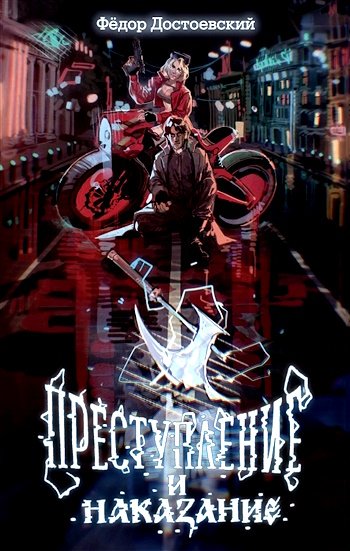nothing in return.”
So Woolard happily granted Jobs’s wish, with a Gulfstream V, and also offered him fourteen million stock options. Jobs gave an unexpected response. He wanted more: twenty million options. Woolard was baffled and upset. The board had authority from the stockholders to give out only fourteen million. “You said you didn’t want any, and we gave you a plane, which you did want,” Woolard said.
“I hadn’t been insisting on options before,” Jobs replied, “but you suggested it could be up to 5% of the company in options, and that’s what I now want.” It was an awkward tiff in what should have been a celebratory period. In the end, a complex solution was worked out that granted him ten million shares in January 2000 that were valued at the current price but timed to vest as if granted in 1997, plus another grant due in 2001.
Making matters worse, the stock fell with the burst of the Internet bubble. Jobs never exercised the options, and at the end of 2001 he asked that they be replaced by a new grant with a lower strike price. The wrestling over options would come back to haunt the company.
Even if he didn’t profit from the options, at least he got to enjoy the airplane. Not surprisingly he fretted over how the interior would be designed. It took him more than a year. He used Ellison’s plane as a starting point and hired his designer. Pretty soon he was driving her crazy. For example, Ellison’s had a door between cabins with an open button and a close button. Jobs insisted that his have a single button that toggled. He didn’t like the polished stainless steel of the buttons, so he had them replaced with brushed metal ones. But in the end he got the plane he wanted, and he loved it. “I look at his airplane and mine, and everything he changed was better,” said Ellison.
At the January 2000 Macworld in San Francisco,
Steve Jobs by Walter Isaacson 481
Jobs rolled out the new Macintosh operating system, OSX, which used some of the software that Apple had bought from NeXT three years earlier. It was fitting, and not entirely coincidental, that he was willing to incorporate himself back at Apple at the same moment as the NeXT OS was incorporated into Apple’s. Avie Tevanian had taken the UNIX-related Mach kernel of the NeXT operating system and turned it into the Mac OS kernel, known as Darwin. It offered protected memory, advanced networking, and preemptive multitasking. It was precisely what the Macintosh needed, and it would be the foundation of the Mac OS
henceforth. Some critics, including Bill Gates, noted that Apple ended up not adopting the entire NeXT operating system. There’s some truth to that, because Apple decided not to leap into a completely new system but instead to evolve the existing one. Application software written for the old Macintosh system was generally compatible with or easy to port to the new one, and a Mac user who upgraded would notice a lot of new features but not a whole new interface.
The fans at Macworld received the news with enthusiasm, of course, and they especially cheered when Jobs showed off the dock and how the icons in it could be magnified by passing the cursor over them.
But the biggest applause came for the announcement he reserved for his “Oh, and one more thing” coda. He spoke about his duties at both Pixar and Apple, and said that he had become comfortable that the situation could work. “So I am pleased to announce today that I’m going to drop the interim title,” he said with a big smile. The crowd jumped to its feet, screaming as if the Beatles had reunited. Jobs bit his lip, adjusted his wire rims, and put on a graceful show of humility. “You guys are making me feel funny now. I get to come to work every day and work with the most talented people on
Steve Jobs by Walter Isaacson 482
the planet, at Apple and Pixar. But these jobs are team sports. I accept your thanks on behalf of everybody at Apple.”
Steve Jobs by Walter Isaacson 483
CHAPTER TWENTY-NINE

Steve Jobs by Walter Isaacson
484
APPLE STORES
Genius Bars and Siena Sandstone
New York’s Fifth Avenue storeThe Customer Experience
Jobs hated to cede control of anything, especially when it might affect the customer experience. But he faced a problem. There was one part of the process he didn’t control: the experience of buying an Apple product in a store.
The days of the Byte Shop were over. Industry sales were shifting from local computer specialty shops to megachains and big box stores, where most clerks had neither the knowledge nor the incentive to explain the distinctive nature of Apple products. “All that the
Steve Jobs by Walter Isaacson 485
salesman cared about was a $50 spiff,” Jobs said.
Other computers were pretty generic, but Apple’s had innovative features and a higher price tag. He didn’t want an iMac to sit on a shelf between a Dell and a Compaq while an uninformed clerk recited the specs of each. “Unless we could find ways to get our message to customers at the store, we were screwed.”
In great secrecy, Jobs began in late 1999 to interview executives who might be able to develop a string of Apple retail stores. One of the candidates had a passion for design and the boyish enthusiasm of a natural-born retailer: Ron Johnson, the vice president for merchandising at Target, who was responsible for launching distinctive-looking products, such as a teakettle designed by Michael Graves. “Steve is very easy to talk to,” said Johnson in recalling their first meeting. “All of a sudden there’s a torn pair of jeans and turtleneck, and he’s off and running about why he needed great stores. If Apple is going to succeed, he told me, we’re going to win on innovation. And you can’t win on innovation unless you have a way to communicate to customers.”
When Johnson came back in January 2000 to be interviewed again, Jobs suggested that they take a walk. They went to the sprawling 140-store Stanford Shopping Mall at 8:30 a.m. The stores weren’t open yet, so they walked up and down the entire mall repeatedly and discussed how it was organized, what role the big department stores played relative to the other stores, and why certain specialty shops were successful.
They were still walking and talking when the stores opened at 10, and they went into Eddie Bauer. It had an entrance off the mall and another off the parking lot. Jobs decided that Apple stores should have only one entrance, which would make it easier to control the experience. And the Eddie Bauer store, they agreed,
Steve Jobs by Walter Isaacson 486
was too long and narrow. It was important that customers intuitively grasp the layout of a store as soon as they entered.
There were no tech stores in the mall, and Johnson explained why: The conventional wisdom was that a consumer, when making a major and infrequent purchase such as a computer, would be willing to drive to a less convenient location, where the rent would be cheaper. Jobs disagreed. Apple stores should be in malls and on Main Streets—in areas with a lot of foot traffic, no matter how expensive. “We may not be able to get them to drive ten miles to check out our products, but we can get them to walk ten feet,” he said. The Windows users, in particular, had to be ambushed: “If they’re passing by, they will drop in out of curiosity, if we make it inviting enough, and once we get a chance to show them what we have, we will win.”
Johnson said that the size of a store signaled the importance of the brand. “Is Apple as big of a brand as the Gap?” he asked. Jobs said it was much bigger.
Johnson replied that its stores should therefore be bigger. “Otherwise you won’t be relevant.” Jobs described Mike Markkula’s maxim that a good company must “impute”—it must convey its values and importance in everything it does, from packaging to marketing. Johnson loved it. It definitely applied to a company’s stores. “The store will become the most powerful physical expression of the brand,” he predicted. He said that when he was young he had gone to the wood-paneled, art-filled mansion-like store that Ralph Lauren had created at Seventy-second and Madison in Manhattan. “Whenever I buy a polo shirt, I think of that mansion, which was a physical expression of Ralph’s ideals,” Johnson said. “Mickey Drexler did that with the Gap. You couldn’t think of a Gap product without thinking of the great Gap store with the clean
Steve Jobs by Walter Isaacson 487
space and wood floors and white walls and folded merchandise.”
When they finished, they drove to Apple and sat in a conference room playing with the company’s products. There weren’t many, not enough to fill the shelves of a conventional store, but that was an advantage. The type of store they would build, they decided, would benefit from having few products. It would be minimalist and airy and offer a lot of places for people to try out things. “Most people don’t know Apple products,” Johnson said. “They think of Apple as a cult.
You want to move from a cult to something cool, and having an awesome store where people can try things will help that.” The stores would impute the ethos of Apple products: playful, easy, creative, and on the bright side of the line between hip and intimidating.
The Prototype
When Jobs finally presented the idea, the board was not thrilled. Gateway Computers was going down in flames after opening suburban stores, and Jobs’s argument that his would do better because they would be in more expensive locations was not, on its face, reassuring. “Think different” and “Here’s to the crazy ones” made for good advertising slogans, but the board was hesitant to make them guidelines for corporate strategy. “I’m scratching my head and thinking this is crazy,” recalled Art Levinson, the CEO of Genentech who joined the Apple board in 2000. “We are a small company, a marginal player. I said that I’m not sure I can support something like this.” Ed Woolard was also dubious. “Gateway has tried this and failed, while Dell is selling direct to consumers without stores and succeeding,” he argued. Jobs was not appreciative of too much pushback from the board. The last time that happened, he had replaced most of the members. This time, for personal reasons as well as being tired of

























